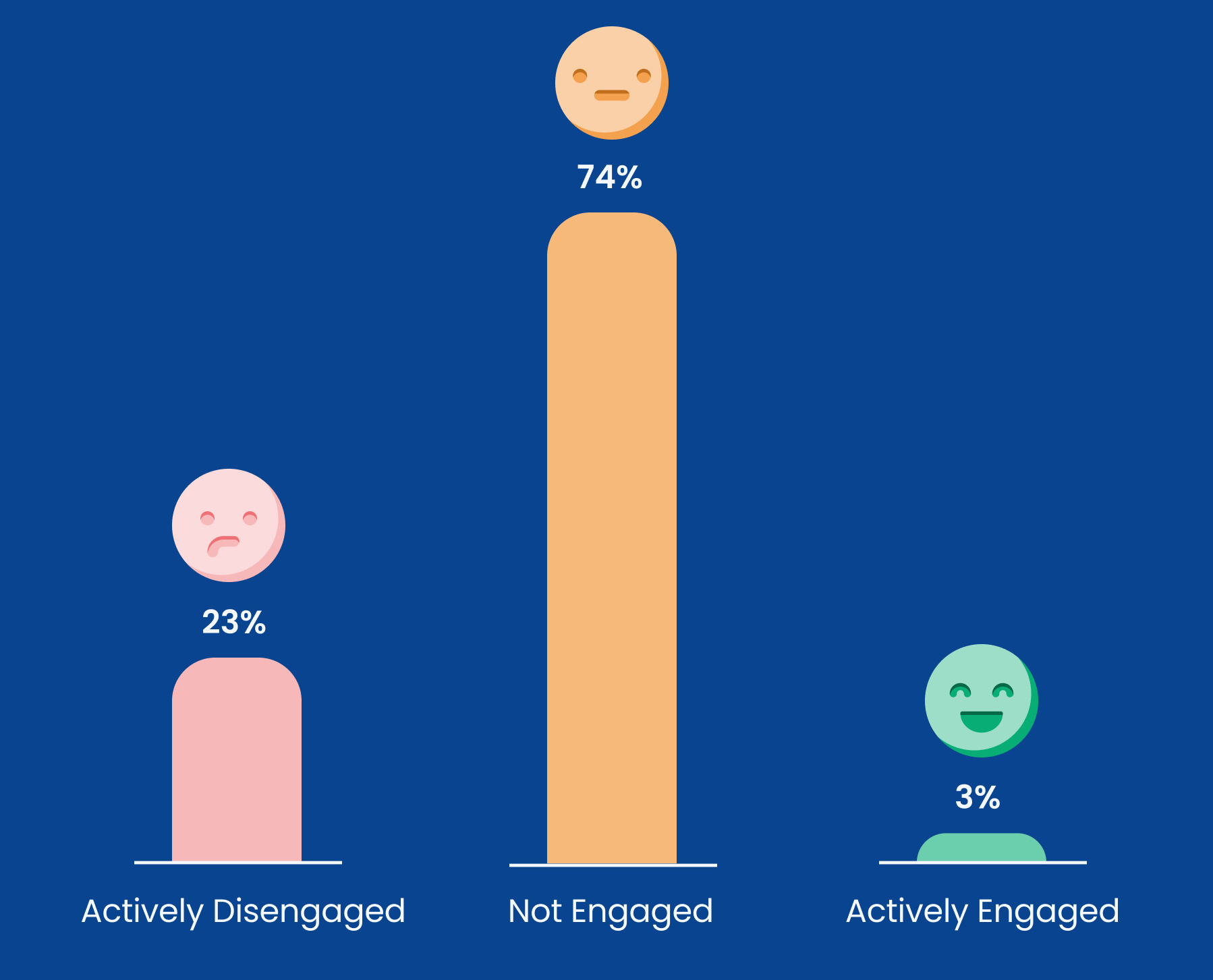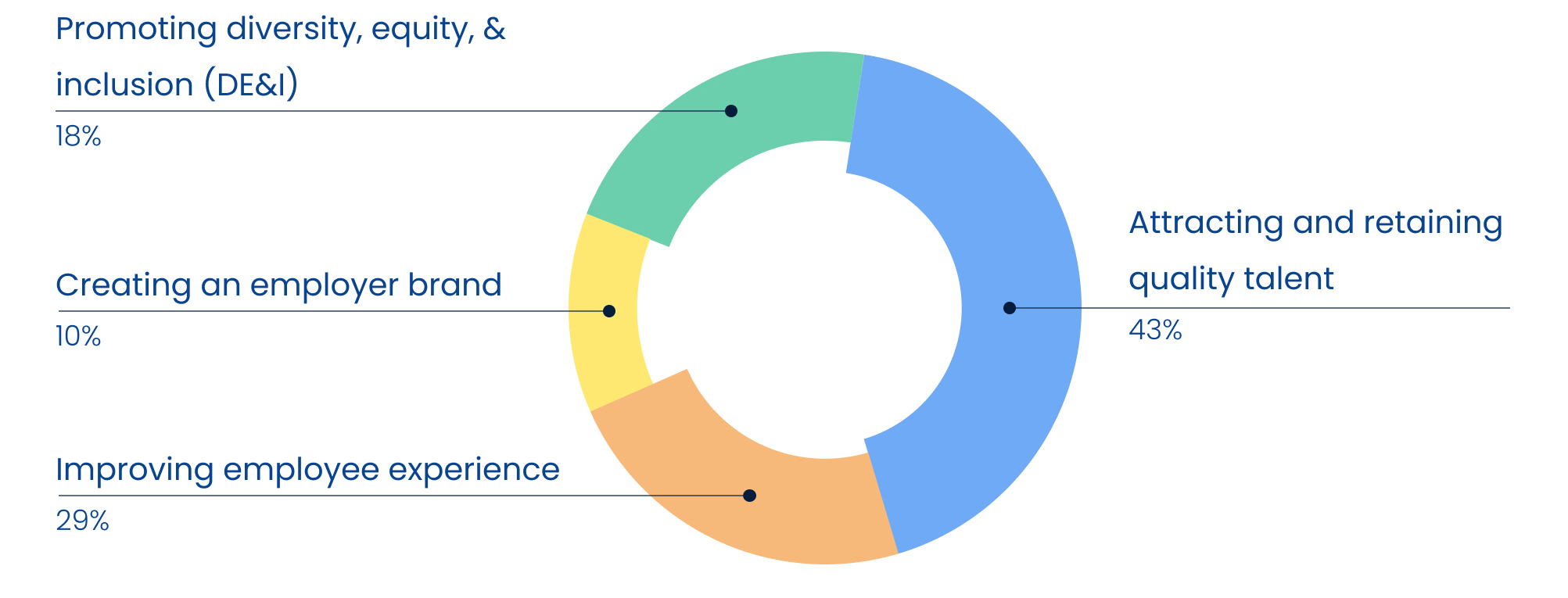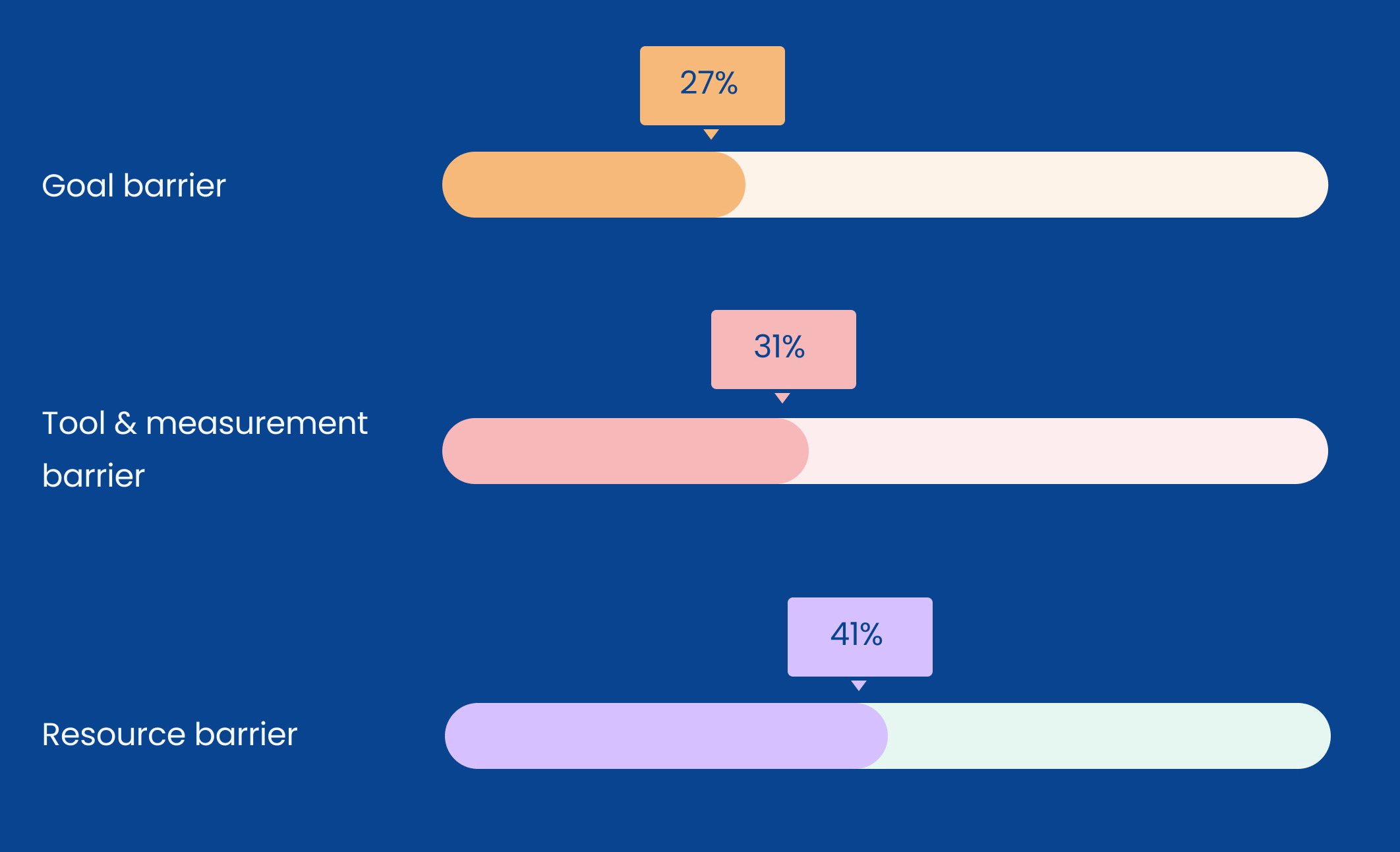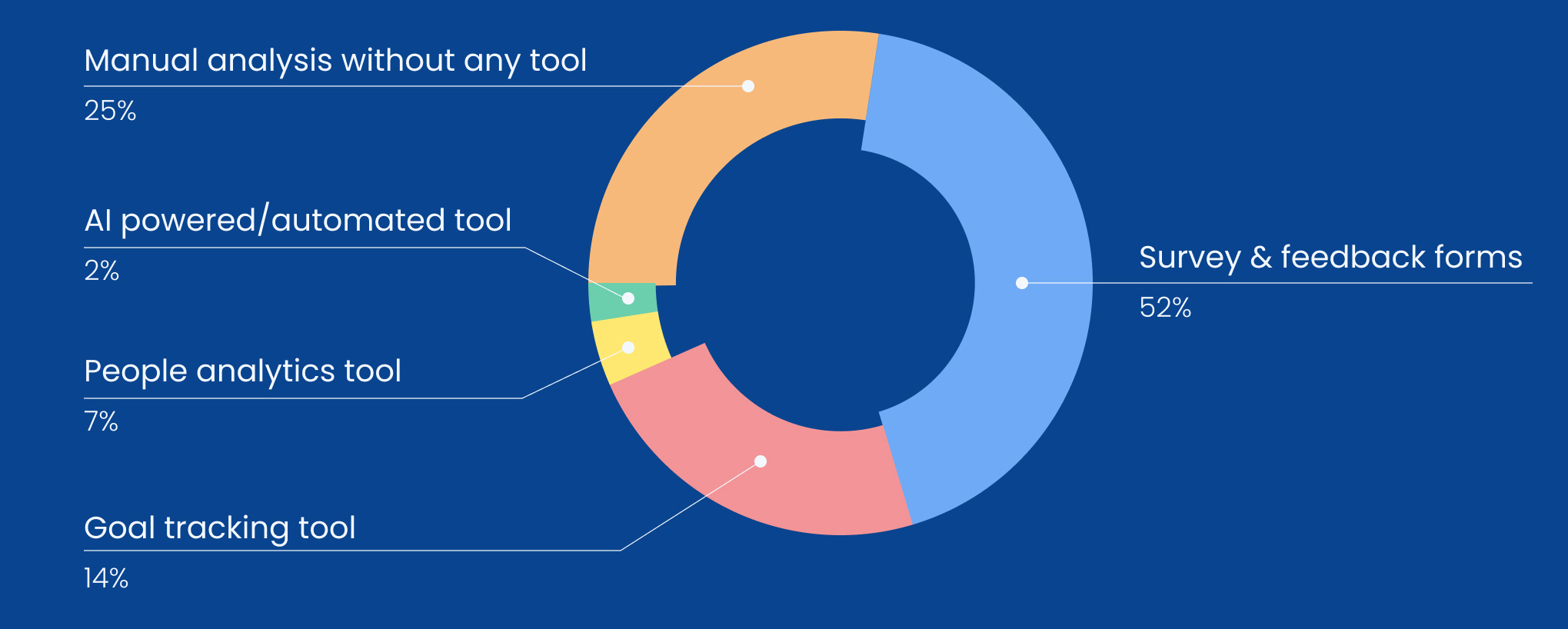The State of Hybrid Employee Engagement
Keeping the dramatically shifting employee and employer expectations as the backdrop, in this blog we examine the trends we observed in the state of employee engagement in hybrid workplace settings.
To give you a quick recap. The last couple of years saw an increasing need for employee engagement. And not the kind of employee engagement that worked 5 years ago, but one that was more streamlined, data-backed, and employee focused. Also, a more strategic one to target three kinds of workforce: on-site, hybrid, and remote.

For companies suffering from the after-effects of the pandemic, the great resignation, quiet quitting, and the now the economic downturn, employee engagement became a need of the hour.
Annual feedback surveys, yearly town halls, and infrequent team catch-ups, did not cut it anymore. As a result, HR’s had to change their approach and work on employee engagement strategies that were more sensitive to, and focused on, the overall employee experience.
Thanks to the intervention of new-age technology, pulse surveys, 360-degree feedback, periodic surveys, process automation, and data analytics powered by artificial intelligence/machine learning, that took charge and redefined hybrid work employee engagement.

There has never been a more promising time for businesses to experiment with innovative hybrid employee engagement initiatives, programs, processes, and to give their employees a thrilling employee experience.
Some businesses found unprecedented success from their efforts, while others suffered a catastrophic failure. But, the concept of this new-age employee engagement seems certain to continue to grow in popularity with hybrid workplaces becoming a norm.
Here’s what we learned about employee engagement in hybrid workplaces:
Key Finding No. 1

60% of participating organizations said that employee engagement is part of business planning and not an ad hoc initiative. Yet, only 3% of participants said that their employees are actively engaged.

Analysis
This suggests that while many organizations understand the importance of hybrid employee engagement, they may not be effectively implementing strategies to promote it which is further causing employee disengagement.
In today’s world, many employees are working remotely or in a hybrid work environment, which means that they are not physically present in the office. This can make it challenging to keep them engaged in the same way that was possible when they were in the office. Today’s smart and fast-moving generations expect intelligent solutions to their problems. They expect their office queries and concerns to be as efficiently resolved as they expect their shopping or food apps to resolve their concerns.
It’s time organizations make employee engagement a part of the their business strategy. Investing in overall employee experience by introducing the right tools and technologies can only help businesses actually witness a positive impact of their engagement strategies.
The Ultimate Employee Engagement Guide
DOWNLOAD NOWKey Finding No. 2
For more than 40% of organizations, employee engagement is a means to attract and retain quality talent.

Analysis
Maintaining a strong and talented workforce is essential to the success of any organization. Attrition can be costly, as it requires time and resources to hire, onboard, and train new employees. The current talent shortage and the trend of “Great Resignation” have made it difficult for organizations to retain and recruit employees, that are increasingly seeking flexibility, learning opportunities, and purposeful work.
To address these challenges, organizations are implementing employee engagement action plans to build deeper connections with their employees and provide them with a sense of purpose and connection to the company. By prioritizing employee engagement, organizations can better retain and attract top talent, ultimately leading to better business outcomes.

Tracy Acker, CEO & Recruiter, GetPaydayLoan.
Key Finding No. 3
More than 50% of the respondents said they use simple surveys and feedback forms to gauge employee engagement and gather feedback, while 25% of the organizations don’t use any tools and rely on manual means.

Analysis
Effective employee engagement strategies require the right tools and technologies to be successful. Without these tools, HR professionals may struggle to gather and analyze data in a timely and efficient manner. This can lead to a reliance on manual processes, which can be time-consuming and may not provide the necessary insights to identify trends and develop impactful action plans.
The use of manual processes can also make it difficult for HR professionals to demonstrate the return on investment (ROI) of employee engagement strategies, which can limit their ability to secure the necessary budget and resources. As a result, HR professionals may be limited to traditional, manual tools and may not be able to fully optimize the employee engagement process.
On the other hand, the use of the right employee engagement tools and technologies can significantly improve the efficiency of the process, from data collection to analytics. By streamlining these processes, HR professionals can more easily identify trends and develop action plans that truly make a difference in employee engagement levels. This can ultimately lead to better business outcomes and a stronger, more engaged workforce.
Technology and new-age tools can really help HR in employee engagement. The tools can help to define how to perform employee engagement and will have a matrix where we can determine the success of the employee engagement activities.
Key Finding No. 4
More than 40% of the organizations said the biggest reason why their employee engagement initiatives are failing is because of a shortage of people who can devote time to employee engagement. In the hybrid workplace, HRs are constantly overworked to strike a balance.
Analysis
This could potentially be because HR professionals are stretched thin in the hybrid workplace, trying to balance the needs of both in-office and remote employees. As a result, they may not have enough time and bandwidth to devote to employee engagement ideas and initiatives. This could have negative impacts on the effectiveness of these initiatives, as they may not be given the necessary attention and support to succeed.
Resource crunch and manual processes go hand-in-hand. Lack of efficient tools takes up a lot of time for HRs and stakeholders to understand the data points. In hybrid workplaces, the role of HRs become even more important but so does employee engagement.
Despite the importance of employee engagement, it is often seen as a low priority for organizations because it can be difficult to quantify the time and money that HR teams spend on engagement initiatives. However, determining employee engagement best practices for your business is a continuous process, and it is essential for organizations to prioritize it in order to maintain a motivated and productive workforce. By using the right tools and technologies, HR professionals can more efficiently track and manage employee engagement, ensuring that it remains a top priority for the organization.
Key Finding No. 5

31% of organizations lacked knowledge about the best tool to measure employee engagement and determine the ROI of their engagement strategy.

Analysis
Measuring employee engagement and determining the return on investment (ROI) of engagement initiatives can be particularly challenging in this environment. This is because hybrid work brings its own set of unique challenges and opportunities, and it is important for organizations to have the right tools and strategies in place to support and engage their employees effectively.
According to our survey, 31% of organizations reported that they lacked knowledge about the best tool to measure employee engagement and calculate the ROI of their engagement strategies. This is a significant concern, as the right tools and technologies can be critical for gathering and analyzing data, identifying trends and issues, and developing and implementing effective engagement strategies.
There are a variety of employee engagement platforms and tools, with their own strengths and limitations, and it is important for organizations to carefully consider their needs and goals when choosing. By selecting the right tool or platform, organizations can better understand the engagement levels and needs of their employees in the hybrid workplace, and take steps to improve and support their engagement.
Jay Guilford
Key Finding No. 6
Almost 30% of organizations are looking at improving employee experience in the hybrid workplace through employee engagement initiatives.

Analysis
In this day and age, organizations need a novel approach that focuses on the employee experience holistically, while first ticking all the boxes of employee engagement – cultural and leadership alignment, work satisfaction, effective communication, tools and resources, health and wellness, etc.
Each facet of employee experience is responsible for engagement and vice-versa.
An employee who is engaged and has a positive employee experience is likely to return the favor by committing themselves to their work and furthering the organization’s interests and brand value. A disengaged employee, however good the employee experience might be, is unlikely to give 100% to their work and the organization.
Similarly, if an employee is not given the right tools and technologies to be effective at their jobs, they will get frustrated, eventually leading to disengagement.
It is time organizations start thinking about moving from employee engagement to employee experience. That is the future of work.
Key Finding No. 7
More than 50% of organizations are still conducting and relying on the age-old concept of annual employee engagement surveys. There is a steady shift, 25%, towards quarterly engagement initiatives. But monthly employee engagement initiatives are still a far-fetched idea with only 8% of respondents following it.

Analysis
Many organizations continue to rely on annual employee engagement surveys to gauge the level of engagement among their employees. While this may provide a snapshot of employee engagement at a particular point in time, it may not be sufficient to capture the full range of employee experiences and needs. In recent years, there has been a gradual shift towards more frequent engagement initiatives, with 25% of organizations conducting quarterly engagement surveys but only 8% conducting monthly surveys.
Pulse surveys, which are shorter and more frequent surveys designed to capture real-time feedback, can be an effective way to track employee engagement on a more regular basis. By gathering feedback more frequently, organizations can get a more nuanced view of employee experiences and needs, and take timely action to address any issues that arise.
“Employees who are engaged are satisfied at work, motivated to perform at their best, satisfied with the work they do and the company in which they work, loyal to their organization, willing to speak positively about their jobs and company to others, and confident of what they do and the firm in which they work.”
Key Finding No. 8
25% of respondents want employee engagement technology to help them identify employees at the risk of leaving, and 30% of respondents want clear insights about improvement areas and employee sentiments.

Analysis
Organizations are aware that gauging employee sentiment in a hybrid environment is difficult. Manual means are not the most efficient way to go about it. Technology can help convert insights into actionable items, listen to employee issues proactively, identify the issues that are distressing employees, and deep-dive to further dissect the data at a micro-level, such as by teams, geographies, etc.
Technology can also help organizations understand how employees feel about their work environment and how they can improve it. Additionally, technology can be used to measure employee engagement and satisfaction levels. This data can then be used to create strategies and policies that will help improve the overall work environment.
New technologies like chatbots, conversational AI, virtual assistants, powered by artificial intelligence, machine learning, natural language processing, etc. are disrupting the HR industry and paving a way for automation.
Key Finding No. 9
27% of organizations said that there was an inherent lack of interest from the leadership towards employee engagement initiatives, and thus no clear goals were set out for its strategy.

Analysis
This could potentially be a major factor in the failure of employee engagement initiatives, as leadership involvement and commitment are often critical to the success of employee engagement efforts. Without clear objectives, employee engagement initiatives may not be effectively aligned with the organization’s overall strategy and objectives, and may not receive the necessary resources and support to succeed.
When leaders don’t fully understand the importance of employee engagement and don’t prioritize it as a business practice, it creates a barrier at every step of the employee engagement process – what to ask, what to measure, or how to calculate its ROI.
Goal setting is the foundation on which the right expectations from the employee engagement initiatives are built, and without a leader to give it direction, an employee engagement strategy is doomed to fail, or worse, never picked up in the first place.
To Sum up
Employee engagement has been gaining significant business importance since the pandemic and technological disruptions transformed the world of work. Numerous HR teams today are trying to find the right way to implement, analyze, and act on employee engagement in the hybrid workplace, which will in turn help their organization meet larger business goals.
With insights from 250+ global experts, Leena AI’s Employee Engagement & The Hybrid Workplace Report: Trends, Challenges, and Best Practices is a step in that direction – to understand the present state and challenges in implementing employee engagement in a hybrid workplace setting in your organization, and come up with best practices that can help you better harness employee engagement to reach your full potential through new-age tools and technologies.






